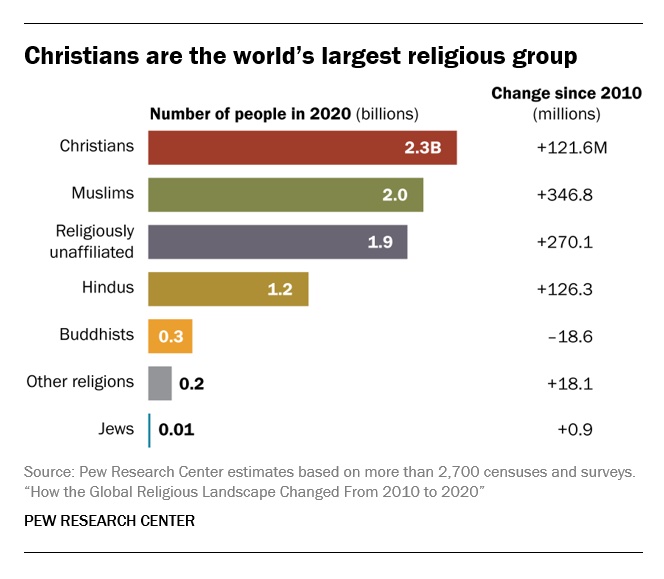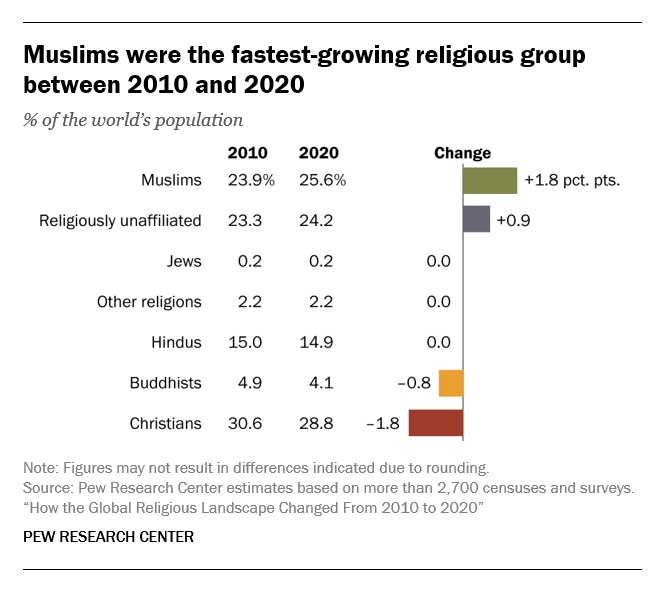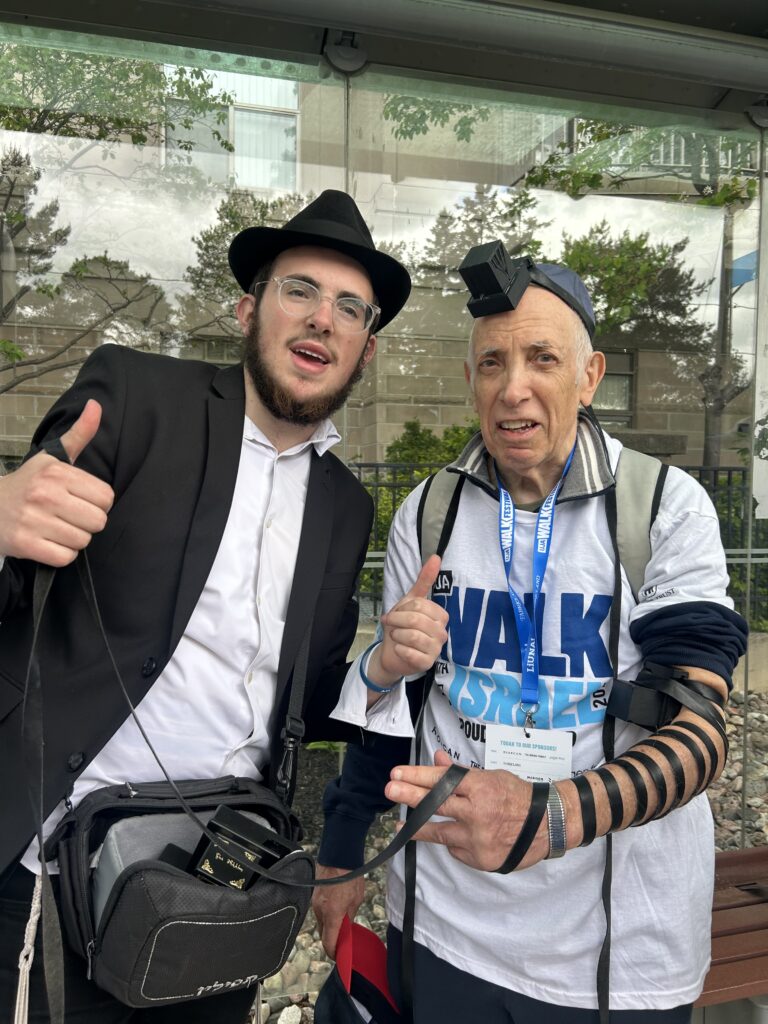Uncategorized
Hebrew school enrollment across US down by nearly half since 2006, report says
(JTA) — Living in Brooklyn, surrounded by synagogues and Jewish schools, Rachel Weinstein White and her husband hoped to find a place where their children could receive a Jewish education for a few hours each week.
But they knew they didn’t want to enroll at a traditional Hebrew school associated with a local synagogue. For one thing, White wasn’t interested at the time in participating in prayer services, the main offering of most congregations. Plus, her husband is Black and not Jewish, and they were not sure how well he or their children would be welcomed.
So about eight years ago, she started her own program together with a few families, setting up a cooperative and hiring a teacher in an early version of the “learning pods” that would become a pandemic fad.
“It was just this incredible, magical year,” White said. “So many people started hearing about our little class and asked to join that it became necessary to create a second class. … It just kind of grew organically from there.”
Today the school, Fig Tree, enrolls about 350 children across three locations and plans are underway to expand further. In hour-long classes on Sundays and weekday afternoons, children learn about Jewish holidays and history, engage in art and creative play, explore their local Jewish communities and learn basic Hebrew, in a program that culminates in a b’nai mitzvah year. It overlaps significantly with traditional Hebrew schools, but outside the usual setting — a synagogue classroom — that has become a cultural shorthand among American Jews for rote, uninspiring Jewish education.
That dynamic may be why Fig Tree is an outlier in a stark trend revealed in a new report: Enrollment in supplemental Jewish schools — those that students attend in addition to regular schooling in public or secular private schools — is down by nearly half over the last 15 years.
Even as the estimated number of Jewish children in the United States rose by 17% between 2000 and 2020, enrollment in Hebrew schools fell by at least 45% between 2006 and 2020, according to the report by the Jewish Education Project, a nonprofit that promotes educational innovation and supports Jewish educators in a wide array of settings.
The report identifies pockets of growth, mostly in the small number of programs like Fig Tree that operate outside of or adjacent to synagogues, and in schools operated by the Hasidic Chabad-Lubavitch movement. But overall, according to the report, just 141,000 children attend supplemental Jewish schools in the United States and Canada, down from more than 230,000 in 2006 and 280,000 in 1987.
Some of the decline in Hebrew school enrollment is countered by increasing enrollment in Jewish day schools, where students study Jewish topics for at least part of every day. The number of U.S. children attending Jewish day schools has risen by roughly the same amount, 90,000, that Hebrew school enrollment has fallen since 2006, according to the report, though a significant portion of the increase stems from population growth in Orthodox communities, where the vast majority of students attend day schools.
Miriam Heller Stern, a professor at Hebrew Union College-Jewish Institute of Religion who was tapped to help design the study, said the results suggest that, as with many aspects of religious life today, Hebrew school enrollment cannot be counted on as an act of obligation or tradition.
“There’s this idea that parents send their kids to Hebrew school because they went to Hebrew school and that’s a rite of passage in North America, but that may be a myth,” she said. “People don’t want to push their kids to have to do the same thing they did, necessarily, anymore.”
The report speculates about what has fueled the enrollment decline — from demographic changes to shifts in how American Jews think about countering antisemitism to increased access to Jewish learning online — and also about what has allowed some schools to thrive. It notes that all of the supplemental schools that responded to its census said their schools help children feel connected to the Jewish people.
“We believe that many factors have led to the decline in enrollment of students in supplemental schools in the last decade,” said David Bryfman, the Jewish Education Project’s CEO. “However, it’s also a myth that all supplemental schools don’t work.”
The group is planning a series of online sessions with some of the dozens of researchers and practitioners involved in the report, with one goal the sharing of success stories identified by the survey. Of the six identified in the report, a common theme is urging experiential, community-based learning. Some of the promising models explicitly position themselves as infusing Jewish content into child care, filling a pressing need for American families.
Still, it may be hard to counter the demographic realities of contemporary American Jews: Just a third of U.S. Jews in a 2020 survey said someone in their household was a member of a synagogue. That was the case even for the majority of non-Orthodox Jews who said they identified with a particular denomination, a marker of traditional engagement.
The waning of synagogue affiliation is borne out in the Jewish Education Project’s report, which found that more than 700 supplemental schools shuttered between 2006 and 2020 — most outright, though as many as 200 have survived in a new form after merging.
Temple Solel, a small Reform congregation in Fort Mill, South Carolina, shut down its Hebrew school in recent years. The volunteer-run program had up to eight students at a time, according to Russ Cobe, a lay leader.
“We sort of hit a point where we weren’t able to sustain it,” Cobe said. “We only had a couple of people teaching and students from a wide range of ages and they wouldn’t show up every week. Also, our wheelhouse seems to be retirement age and above. We don’t have a lot of young families.”
Hebrew school mergers offer one possible approach to countering the enrollment decline. Two synagogues, one Reform and one Conservative, located half a mile apart in Oak Park, Michigan, established a joint school about seven years ago and called it Yachad, which means “together” in Hebrew.
“One day a week we meet at the Conservative congregation and one day a week we meet at the Reform congregation, so we are keeping our kids involved in both,” said Gail Greenberg, Yachad’s director. “My goal is to make it at the highest common denominator. For example, all of our food is kosher so anyone who wants to eat here can.”
The arrangement appears to be working. Last year, about 90 students were enrolled, and this year, enrollment is at 128, including 26 new kindergarteners, with even larger numbers expected in the future.
Another set of programs has grown dramatically in recent years: those affiliated with the Chabad movement, which tend to operate even when small and cost less than synagogue programs. Since 2006, the study says Chabad’s market share in terms of enrollment has grown from 4% to 10%, and in terms of the number of schools from 13% to 21%.
Those figures might represent an undercount, according to Zalman Loewenthal, director of CKids, the Chabad network of children’s programs. While the study says there are some 300 Chabad programs in the United States, Loewenthal said he is aware of at least 500 and perhaps as many as 600 — a number driven up in the last decade amid a push by Chabad to launch more Hebrew schools. His count is based on the number of customers purchasing the curriculum offered by his organization, which is also new in the last decade and in his view has contributed to improved quality among Chabad Hebrew schools.
In general, non-traditional approaches to Jewish education may be attractive at a time when American families have packed schedules and competing needs, according to Stern.
“People want to be able to have bite-sized pieces just like you sign up for a six-weeks art class, they might want a six-weeks Jewish class,” she said. “In this atmosphere, some communities are finding ways to be more modular and more flexible, and meet people’s needs in different ways.”
Stern also said, referring to six programs highlighted in the study as success stories, that the future calls for programs to offer an “immersive” experience, meaning that children become part of a community.
“They are getting something beyond just knowledge,” Stern said. “They’re also getting connection and belonging, which provides the foundation for something bigger in their lives.”
Stern said she thought the report pointed to gaps in the way American Jewish communities allocate their resources.
“Supplementary education really was abandoned as a communal priority,” she said. “Individual communities had to find ways to fund it on their own. And I think that is part of why we’re seeing a decline.”
Bryfman said he’s optimistic, both about the power of supplemental schools and the potential for them to generate new support from Jewish donors.
The Jewish Education Project had sought outside funding to pay for its study and failed, he said. But now that the numbers are clear, he is beginning to see interest from philanthropies.
“I don’t want to count the dollars before they’re granted,” Bryfman said. “But the study is already beginning to have the desired effect of bringing more resources to the field.”
Fig Tree isn’t set up to benefit in a possible future of increased charitable investments in Jewish education. That’s because the school is set up as a business — an expression of confidence in its growth and to insulate itself from the vagaries of philanthropy.
“It’s a very unusual model for the Jewish education and I would argue a self-sustaining one,” White said. “We don’t have to rely on fundraising… and we’re not beholden to some of the other requirements that a nonprofit would necessitate, which allows us to be nimble.”
—
The post Hebrew school enrollment across US down by nearly half since 2006, report says appeared first on Jewish Telegraphic Agency.
Uncategorized
How the Global Religious Landscape Changed from 2010 to 2020

Muslims grew fastest; Christians lagged behind global population increase
• Christians are the world’s largest religious group, at 28.8% of the global population. They are a majority everywhere except the Asia-Pacific and Middle East-North Africa regions. Sub-Saharan Africa has surpassed Europe in having the largest number of Christians. But Christians are shrinking as a share of the global population, as millions of Christians “switch” out of religion to become religiously unaffiliated.

• Muslims are the world’s second-largest religious group (25.6% of the world’s population) and the fastest-growing major religion, largely due to Muslims’ relatively young age structure and high fertility rate. They make up the vast majority of the population in the Middle East-North Africa region. In all other regions, Muslims are a religious minority, including in the Asia-Pacific region (which is home to the greatest number of Muslims).

• The religiously unaffiliated population is the world’s third-largest religious category (24.2% of the global population), after Christians and Muslims. Between 2010 and 2020, religiously unaffiliated people grew more than any group except Muslims, despite their demographic disadvantages of an older age structure and relatively low fertility. The unaffiliated made up a majority of the population in 10 countries and territories in 2020, up from seven a decade earlier.
• Hindus are the fourth-largest religious category (14.9% of the world’s population), after Christians, Muslims and religiously unaffiliated people. Most (99%) live in the Asia-Pacific region; 95% of all Hindus live in India alone. Between 2010 and 2020, Hindus remained a stable share of the world’s population because their fertility resembles the global average, and surveys indicate that switching out of or into Hinduism is rare.
• Buddhists (4.1% of the world’s population) are the only group in this report whose number declined worldwide between 2010 and 2020. This was due both to religious disaffiliation among Buddhists in East Asia and to a relatively low birth rate among Buddhists, who tend to live in countries with older populations. Most of the world’s Buddhists (98%) reside in the Asia-Pacific region, the birthplace of Buddhism.
• Jews, the smallest religious group analyzed separately in this report (0.2% of the world’s population), lagged behind global population growth between 2010 and 2020 – despite having fertility rates on par with the global average – due to their older age structure. Most Jews live either in North America (primarily in the United States) or in the Middle East-North Africa region (almost exclusively in Israel).
These are among the key findings of a Pew Research Center analysis of more than 2,700 censuses and surveys, including census data releases that were delayed due to the coronavirus pandemic. This report is part of the Pew-Templeton Global Religious Futures project, which analyzes global religious change and its impact on societies around the world. Funding for the Global Religious Futures project comes from The Pew Charitable Trusts and the John Templeton Foundation.
Uncategorized
Antisemitism in some unlikely places in America

By HENRY SREBRNIK Antisemitism flourishes in a place where few might expect to confront it – medical schools and among doctors. It affects Jews, I think, more emotionally than Judeophobia in other fields.
Medicine has long been a Jewish profession with a history going back centuries. We all know the jokes about “my son – now also my daughter – the doctor.” Physicians take the Hippocratic Oath to heal the sick, regardless of their ethnicity or religion. When we are ill doctors often become the people who save us from debilitating illness and even death. So this is all the more shocking.
Yes, in earlier periods there were medical schools with quotas and hospitals who refused or limited the number of Jews they allowed to be affiliated with them. It’s why we built Jewish hospitals and practices. And of course, we all shudder at the history of Nazi doctors and euthanasia in Germany and in the concentration camps of Europe. But all this – so we thought – was a thing of a dark past. Yet now it has made a comeback, along with many other horrors we assume might never reappear.
Since the Hamas attack on Israel on October 7, 2023, there has been a resurgence of antisemitism, also noticeable in the world of healthcare. This is not just a Canadian issue. Two articles on the Jewish website Tablet, published Nov. 21, 2023, and May 18, 2025, spoke to this problem in American medicine as well, referencing a study by Ian Kingsbury and Jay P. Greene of Do No Harm, a health care advocacy group, based on data amassed by the organization Stop Antisemitism. They identified a wave of open Jew-hatred by medical professionals, medical schools, and professional associations, often driven by foreign-trained doctors importing the Jew-hatred of their native countries, suggesting “that a field entrusted with healing is becoming a licensed purveyor of hatred.”
Activists from Doctors Against Genocide, American Palestinian Women’s Association, and CODEPINK held a demonstration calling for an immediate cease-fire in Gaza at the Hart Senate Office Building in Washington, D.C., Nov. 16, 2023, almost as soon as the war began. A doctor in Tampa took to social media to post a Palestinian flag with the caption “about time!!!” The medical director of a cancer centre in Dearborn, Michigan, posted on social media: “What a beautiful morning. What a beautiful day.” Even in New York, a physician commented on Instagram that “Zionist settlers” got “a taste of their own medicine.” A Boston-based dentist was filmed ripping down posters of Israeli victims and a professor at the University of Pennsylvania Perelman School of Medicine did the same. Almost three-quarters of American medical associations felt the need to speak out on the war in Ukraine but almost three-quarters had nothing to say about the war in Israel.
Antisemitism in academic medical centres is fostering noxious environments which deprive Jewish healthcare professionals of their civil right to work in spaces free from discrimination and hate, according to a study by the Data & Analytics Department of StandWithUs, an international, non-partisan education organization that supports Israel and fights antisemitism.
“Academia today is increasingly cultivating an environment which is hostile to Jews, as well as members of other religious and ethnic groups,” StandWithUs director of data and analytics, and study co-author, Alexandra Fishman, said on May 5 in a press release. “Academic institutions should be upholding the integrity of scholarship, prioritizing civil discourse, rather than allowing bias or personal agendas to guide academic culture.”
The study, “Antisemitism in American Healthcare: The Role of Workplace Environment,” included survey data showing that 62.8 per cent of Jewish healthcare professionals employed by campus-based medical centres reported experiencing antisemitism, a far higher rate than those working in private practice and community hospitals. Fueling the rise in hate, it added, were repeated failures of DEI (diversity, equity, and inclusion) initiatives to educate workers about antisemitism, increasing, the report said, the likelihood of antisemitic activity.
“When administrators and colleagues understand what antisemitism looks like, it clearly correlates with less antisemitism in the workplace,” co-author and Yeshiva University professor Dr. Charles Auerbach reported. “Recognition is a powerful tool — institutions that foster awareness create safer, more inclusive environments for everyone.”
Last December, the Data & Analytics Department also published a study which found that nearly 40 per cent of Jewish American health-care professionals have encountered antisemitism in the workplace, either as witnesses or victims. The study included a survey of 645 Jewish health workers, a substantial number of whom said they were subject to “social and professional isolation.” The problem left more than one quarter of the survey cohort, 26.4 per cent, “feeling unsafe or threatened.”
The official journal of the Alliance for Academic Internal Medicine concurs. According to “The Moral Imperative of Countering Antisemitism in US Medicine – A Way Forward,” by Hedy S. Wald and Steven Roth, published in the October 2024 issue of the American Journal of Medicine, increased antisemitism in the United States has created a hostile learning and practice environment in medical settings. This includes instances of antisemitic behaviour and the use of antisemitic symbols at medical school commencements.
Examples of its impact upon medicine include medical students’ social media postings claiming that Jews wield disproportionate power, antisemitic slogans at the University of California, Los Angeles (UCLA) David Geffen School of Medicine, antisemitic graffiti at the University of California, San Francisco (UCSF) Cancer Centre, Jewish medical students’ exposure to demonization of Israel diatribes and rationalizing terrorism; and faculty, including a professor of medicine at UCSF, posting antisemitic tropes and derogatory comments about Jewish health care professionals. Jewish medical students’ fears of retribution, should they speak out, have been reported. “Our recent unpublished survey of Jewish physicians and trainees demonstrated a twofold increase from 40% to 88% for those who experienced antisemitism prior to vs after October 7,” they stated.
In some schools, Jewish faculty are speaking out. In February, the Jewish Faculty Resilience Group at UCLA accused the institution in an open letter of “ignoring” antisemitism at the School of Medicine, charging that its indifference to the matter “continues to encourage more antisemitism.” It added that discrimination at the medical school has caused demonstrable harm to Jewish students and faculty. Student clubs, it said, are denied recognition for arbitrary reasons; Jewish faculty whose ethnic backgrounds were previously unknown are purged from the payrolls upon being identified as Jews; and anyone who refuses to participate in anti-Zionist events is “intimidated” and pressured.
Given these findings, many American physicians are worried not only as Jewish doctors and professionals, but for Jewish patients who are more than ever concerned with whom they’re meeting. Can we really conceive of a future where you’re not sure if “the doctor will hate you now?”
Henry Srebrnik is a professor of political science at the University of Prince Edward Island.
Uncategorized
The 2025 Toronto Walk (and talk ) for Israel

By GERRY POSNER There are walks and then there are walks. The Toronto UJA Walk for Israel on May 25, 2025 was one of a kind, at least as far as Canada and Jews are concerned. The number of people present was estimated to be 56,000 people or 112,000 total shoes. (How they get to that number is bewildering to me, since there is no one counting). This was 6,000 more than last year. Whether it is true or not, take it from me, it was packed. The synagogues in Canada should be so fortunate to get those numbers in total on High Holidays. The picture here gives you a sense of the size of the crowd.

This was my first walk in Toronto for Israel and I was with my granddaughter, Samantha Pyzer (not to forget her two friends whom she managed to meet at the site, no small feat, even with iPhones as aids). The official proceedings began at 9:00 a.m. and the walk at 10:00 a.m. There was entertainment to begin with, also along the way, and at the finish as well. The finish line this year was the Prosserman Centre or the JCC as it often called. The walk itself was perhaps 4 kilometres – not very long, but the walking was slow, especially at the beginning. There were lots of strollers, even baby carriages, though I did not see any wheelchairs. All ages participated on this walk. I figured, based on what I could see on the faces of people all around me that, although I was not the oldest one on the walk, I bet I made the top 100 – more likely the top 20.
What was a highlight for me was the number of Winnipeggers I met, both past and present. Connecting with them seemed to be much like a fluke. No doubt, I missed la lot of them, but I saw, in no particular order (I could not recall the order if my life depended on it): Alta Sigesmund, (who was, a long time ago, my daughter Amira’s teacher), Marni Samphir, Karla Berbrayer and her husband Dr. Allan Kraut and family. Then, when Samantha and I made it to the end and sat down to eat, I struck up a conversation with a woman unknown to me and as we chatted, she confirmed her former Winnipeg status as a sister-in- law to David Devere, as in Betty Shwemer, the sister of Cecile Devere. I also chanced upon Terri Cherniack, only because I paused for a moment and she spotted me. As we closed in near the finish, I met ( hey were on their way back), Earl and Suzanne Golden and son Matthew, as well as Daniel Glazerman. That stop caused me to lose my granddaughter and her pals. Try finding them amid the noise and size of the crowd – but I pulled it off.

As I was in line to get food, I started chatting with a guy in the vicinity of my age. I dropped the Winnipeg link and the floodgates opened with “ Did I know Jack and Joanie Rusen?” So that was an interesting few minutes. And I was not too terribly surprised to come across some of my Pickleball family. All of these meetings, along with spotting some of my sister’s family and other cousins, were carried on with the sound of the shofar as we moved along the way. In short, this was a happening. Merchants selling a variety of products, many of them Israeli based, were in evidence and, of course, the day could not have ended without the laying of tefillin, aided by Chabad, who have perfected the procedure to take less than a minute. See the photo. Chabad had a willing audience.
Aside from the joy of sharing this experience with my granddaughter, the very presence of all these Jews gathered together for a common reason made this day very special to me. However, there was a downside to the day. The downside was that, as we began to walk back to our car there was no other way I could figure out how to return when the rains came and came. While we walked faster, we were impeded by pouring rain and puddles. But Samantha wanted to persevere, as did I. We made it, but were drenched. My runners are still drying out as I write this two days later.
What with being surrounded by 56,000 people, the noise, the slow walking, and the rain, I can still say the day was a real highlight for me – one of the better moments since our arrival in Toronto in 2012. As well as the photos we took along the way, I have the reminder of the day, courtesy of the UJA, as evidenced from the photo. It was not just the walk, but the talk that accompanied the walk that made it so worthwhile for me. I would do it again, minus the rain.
